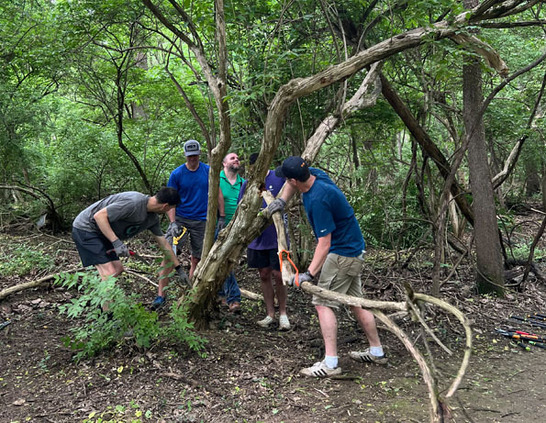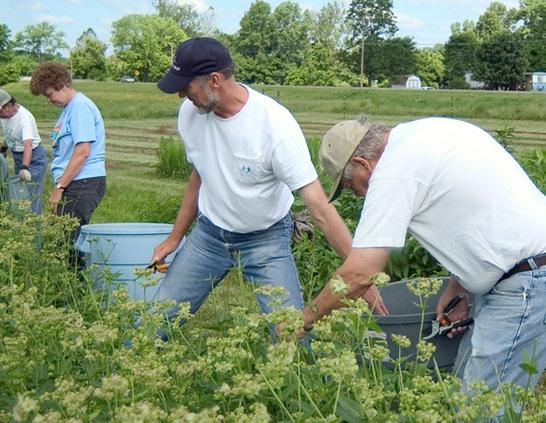Invasive Plants
Bush Honeysuckle (Lonicera maackii) is the most invasive shrub. Bush honeysuckle leafs out earlier than most native plants, thereby shading out everything under its branches, including native wildflowers and young trees. In Hamilton County, without any natural predators or controls, bush honeysuckle is weed enemy number one.
Japanese Honeysuckle (Lonicera japonica) was imported to control erosion and to be used as a landscape plant. This vine quickly forms dense patches that climb over and smother extensive areas of native vegetation.
Winter Creeper (Euonymus fortunei) is an evergreen groundcover. This tough plant carpets the forest floor, engulfing everything in its path.
Garlic Mustard (Alliaria petiolata) can out-compete native plants and wildflowers by monopolizing light, moisture and nutrients. The animals that depend on the many species of displaced native plants are also eliminated where garlic mustard prevails.
Lesser Celandine (Ranunculus ficaria)may be pretty to behold with its bright yellow flowers, but it wreaks havoc on native species as its thick foliage smothers out anything trying to sprout from under its leaves. Lesser celandine can spread as much as 50 feet up steep hillsides.

